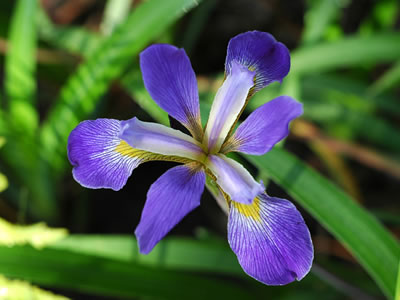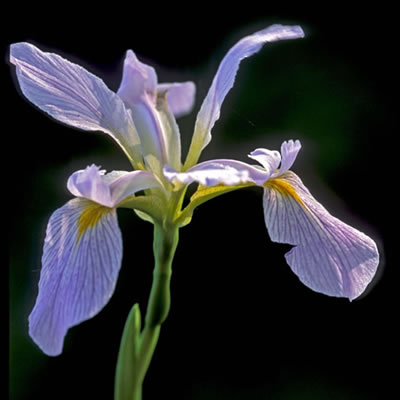Our Native Irises: Blue Flag Irises
Iris virginica var. virginica: Southern Blue Flag Iris
The southern blue flag iris occurs from Virginia, south to Florida, and west to eastern Texas.
Iris virginica var. virginica has a light blue to deep violet, rarely white, flower. The sepals are spreading with darker blue to purple veins with a light yellow pubescent signal. Southern blue flag iris flowers in late spring. Flowers are a one- to two-flowered inflorescence on a barely- or non-branching stem. The plants are up to two feet tall. The weakly arching green leaves are two to three feet long and are burgundy colored at the base. The leaves arise from shallowly rooted, large, branching rhizomes that can form large clumps.
Iris virginica var. virginica is commonly found growing in wet ditches, swamps, wet meadows, marshes, stream edges and lake and pond shores.
For More Information
Iris virginica var. shrevei: Shreve's Iris
Shreve’s Iris occurs throughout the eastern United States except for New England, Georgia, and Florida. Iris shrevei occurs as far west as Nebraska and south to Texas.
Iris virginica var. shrevei has a light blue to deep violet, rarely white, flower. The sepals are spreading with darker blue to purple veins with a light yellow pubescent signal. Shreve’s iris flowers in late spring. Flowers are a one- to two-flowered inflorescence on a stem that has one to two branches. The plants are up to three feet tall. The weakly arching green leaves are two to three feet long and are burgundy colored at the base. The leaves arise from shallowly rooted, large, branching rhizomes that can form large clumps.






